A guide to renovating your St Albans home
A Guide to Revamping Your St Albans Home: Top Tips and Tricks for a Successful Makeover
Posted by Craig | Updated January, 2026 | 10 Min Read Time
At a glance
- A successful renovation project is broken up into carefully planned stages. Those stages include working out available budgets, type of renovation, prep work, completion of works and finally snagging of your finished project.
Key takeaways from this article:
- Proper planning, design, and budgeting are essential for a successful home renovation.
- Identify the type of renovation you wish to undertake and tailor your approach accordingly.
- Establish a clear plan for each phase of the project to ensure smooth progress and completion.
Renovating your home can be an exciting yet challenging process. A well-planned renovation can not only increase the value of your home, but also improve its functionality and overall aesthetics. To ensure a successful project, it is essential to consider various factors such as planning, design, budget, and the sequence of tasks.
Before taking on a house renovation, it’s crucial to evaluate the scope of the project and identify your specific goals. Each type of renovation – be it structural, functional, or cosmetic – will require different steps, resources, and expertise.
When it comes to the actual work, it’s essential to have a clear plan in place that outlines each phase and the corresponding timelines. This plan will help you maintain focus on your goals, manage resources effectively, and ultimately achieve a successful outcome.
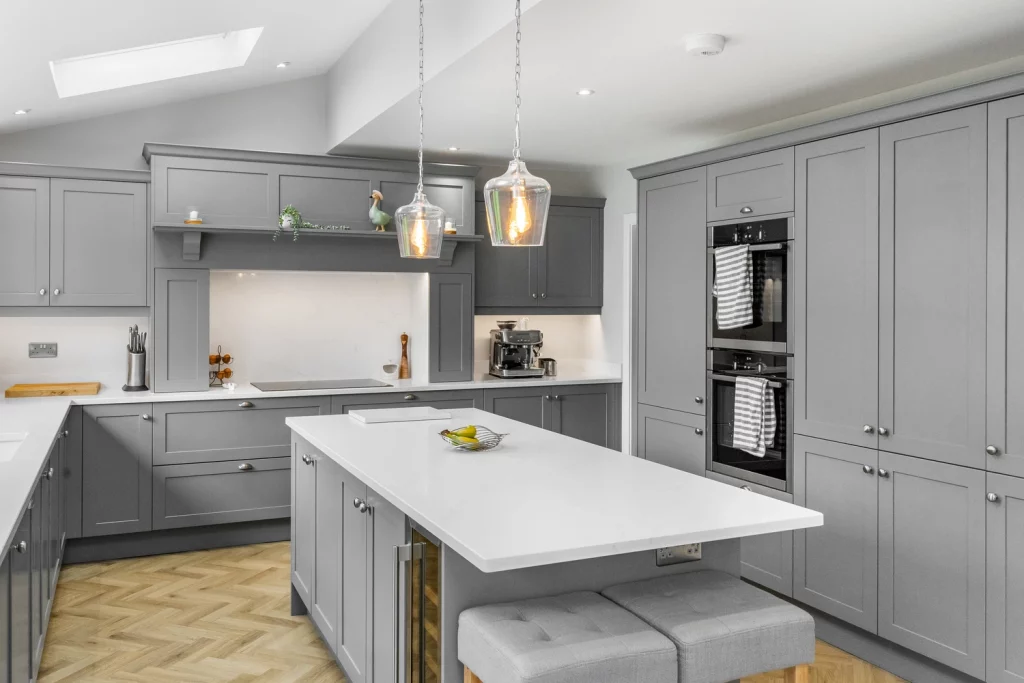
A Successful Renovation Project Is Broken Up Into Carefully Planned Stages. Thinking Outside The Box And Working Back From What You Envision Is A Good Starting Point
Dreaming of a home that changes how you live? It could be the year for change!
The Different Types of Home Renovations
There are various types of home renovations, and your choice will depend on factors like your budget, planning permission, regulations, and finance.
It’s essential to consider the scope of the project and the level of expertise required for each type of renovation. Some renovations can be tackled as do-it-yourself (DIY) projects, whereas others require the assistance of professionals.
Your renovation project may include updating a single room, renovating an entire house, or going as far as adding an extension, which at CJ Smiths we are specialists at! Feel free to reach out to us if you need help on your next renovation project, we’d be happy to help!
“We are extremely happy with the work that Craig and the team have done for us. Throughout the build process communication was excellent, the project was delivered on time and the finish is superb.”
Now back to the article!
How Long Do Home Renovations Take?
The duration of home renovations depends on the type and complexity of the work being undertaken. Smaller DIY projects can typically be completed within a matter of days or weeks. In contrast, more extensive renovations involving structural work or specialist tradespeople can take several months or even longer to complete.
Factors like budget, design complexity, and obtaining planning permission can all impact the renovation timeline. For example, kitchen renovations may take between 4-10 weeks, while bathroom renovations generally require 3-6 weeks.
The timeframes for these projects will fluctuate based on factors like the availability of your local tradespeople, the scale and scope of the project, or unforeseen issues that may arise during the renovation process….and they normally do!
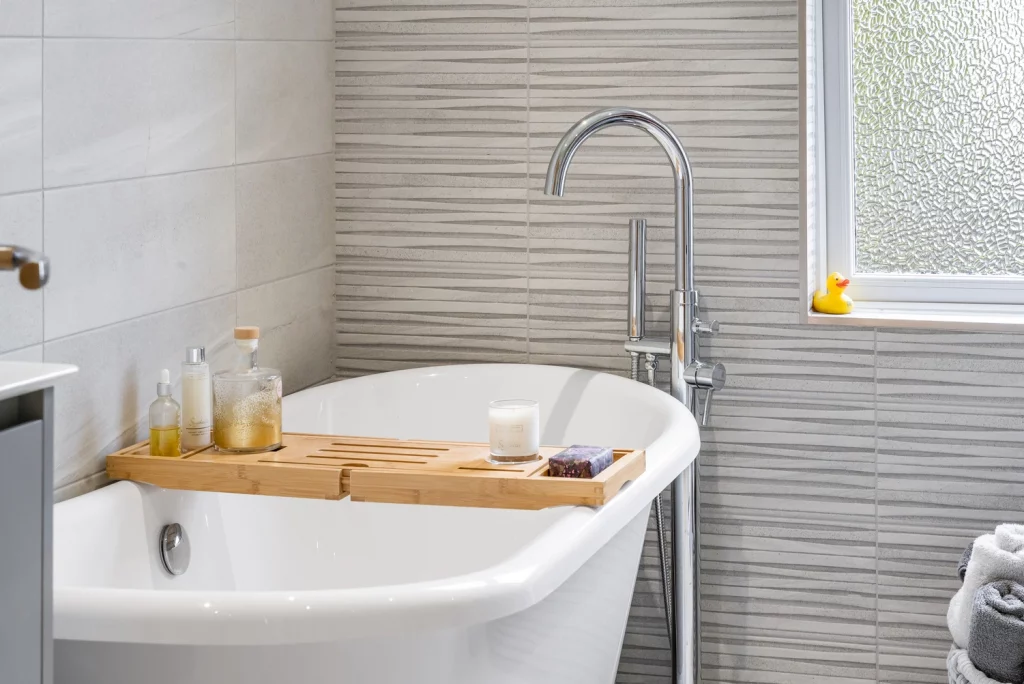
The Correct Order to Renovate Your Home
When it comes to renovating a home especially while living in it, having a well-thought-out plan is essential. The first step in this process is to assess your renovation objectives and establish a budget. Remember to work back from your renovation goal!
Next, it is advisable to hire a designer and architect if necessary. Their knowledge and expertise will ensure a functional and aesthetically pleasing design. Additionally, obtain any required permits before commencing construction work.
One key aspect to consider is the structural integrity of your home. Address any foundation, wall, or roof issues at the outset of your renovation project. This helps to prevent costly repairs later on and it absolutely crucial!
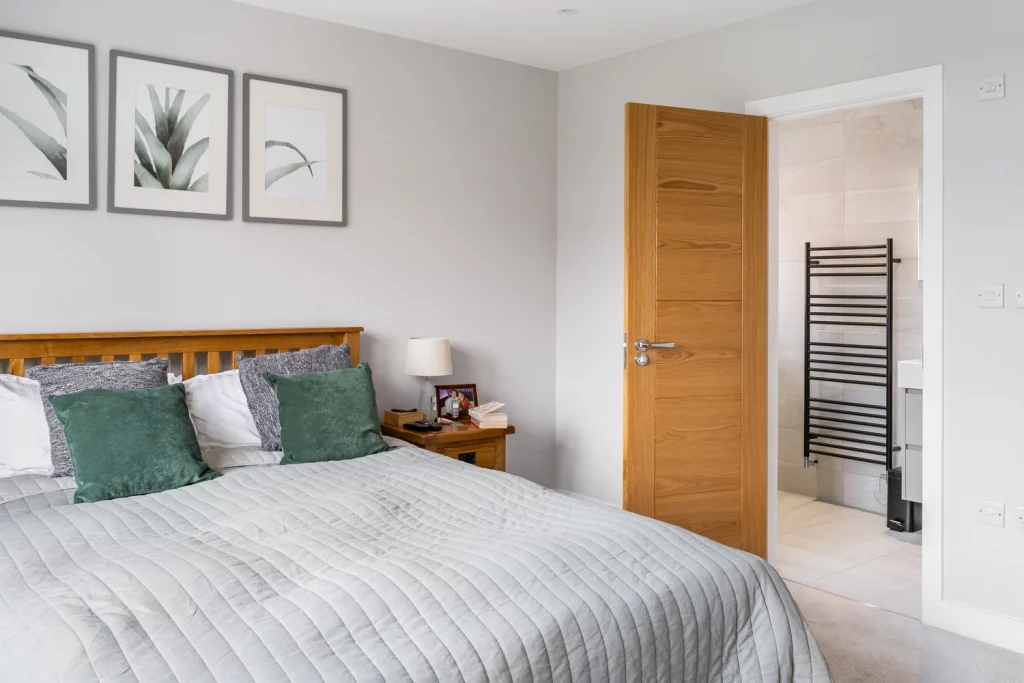
Step 1. Working out budgets and excess finances
Pricing Up The Renovation
Before starting your home renovation, it’s essential to establish your budget and calculate the amount of excess money you have available.
To start, gather quotes from professionals for various aspects of the renovation, such as extensions or rewiring and plumbing. This enables you to gain an understanding of the differing costs involved.
Here’s a sample cost breakdown for common renovation projects (estimations only**)
| Renovation Project | Expected Time Frame | Estimated Cost |
|---|---|---|
| Kitchen Remodel | 3-12 weeks | £11,000 - £37,000 |
| Bathroom Renovation | 2-5 weeks | £4,500 - £15,000 |
| Living Room Update | 2-4 weeks | £1,500 - £7,500 |
| Bedroom Makeover | 2-4 weeks | £1,100 - £3,700 |
| Whole House Renovation | 6-12 months | £45,000 - £150,000 |
| Exterior Painting | 1-2 weeks | £1,500 - £4,500 |
| Roof Replacement | 1-2 weeks | £3,700 - £7,500 |
Once you’ve got these quotes, its a good idea to create a spreadsheet to track the costs and organise them. Consider both high-level and low-level expenses to avoid overspending.
You can also review areas where you can save money, such as doing some of the work yourself, or shopping around for better deals on materials and labour. By following these steps, you can create a solid financial foundation for your home renovation and avoid potential financial setbacks!
Step 2. What Type Of Renovations Do You Want To Do?
Do you need planning permissions?
Before starting your renovations, consider the need for planning permissions. Depending on the estate, your house and the extent of the renovation, these may be required.
Check with St Albans local council to determine the specific regulations, this is something CJ Smiths would be happy to help you with!
Also ask yourself “What type of renovation am i planning to do?” Is it Internal or external? Internal renovations focus on upgrading or repairing parts of the interior, such as decorating, layout changes or completely modernising rooms. External renovations involve the façade or structure, like adding a house extension or treating the exterior for a new look which are a lot more complex projects.
Are you doing it yourself or using a professional?
Once you’ve decided on the type of renovations, assess whether you can tackle them yourself or if it’s best to hire a professional. DIY renovations may save you money but can be time-consuming and may require specialised knowledge.
Keep in mind that some parts of the projects, like central heating changes and electrical work should always be handled by professionals as they will need to be signed of with the appropriate certifications.
On the other hand, hiring a project manager or team of professionals may initially cost more, but they bring expertise and ensure that the work is completed properly and safely.

Step 3. Preparing for the project to start
Proper preparation is the key to a successful renovation project. As the saying goes, “fail to prepare, prepare to fail”. In this section, we will discuss how to effectively prepare for your home renovation project.
Creating a schedule of work
Begin by creating a detailed schedule of work. This should include the order in which tasks will be completed, as well as their respective deadlines.
A well-organised timeline will help ensure a smooth renovation process. Consider using project management software or a simple spreadsheet to keep everything in order, Google sheets or Microsoft Excel will be fine for this.
Clearing the space
Before any work begins, clear the space. Remove furniture, personal belongings, and any other items that may obstruct the work area. This will make it easier for contractors to carry out tasks and help prevent damage to your possessions.
Protecting valuables
In addition to clearing the space, take steps to protect valuable items that may be vulnerable to damage during the renovation. Cover large furniture pieces, artwork, and electronic devices with protective materials such as plastic sheeting or dust sheets.
Gaining access
Ensure that the building contractors have easy access to the worksite. You may have to provide them keys, arranging parking permits, or setting up a temporary entrance. Communicate with neighbours if necessary and notify them of the upcoming work to help minimise disruptions.
Arranging a skip
Finally, arrange for a skip to be available on-site. This will make it easy to dispose of waste materials generated during the renovation project. Research local skip hire options and choose a provider that meets your needs in terms of size, cost, and collection frequency.
CJ Smiths have great relationships with the local skip businesses and would be happy to assist you in selecting the right size skip for your project.
A Professionally Completed Home Renovation Could Increase Your Properties Value By Up To 8%
Step 4. Starting the Work
Allowing Enough Time to Complete the Work
By now, you have carefully planned your home renovation, and it’s time to start the work. This is where you begin your transformation. Ensure you have a realistic schedule that takes into account potential delays and conflicts to avoid unnecessary stress during the project.
Being Positive and Enjoying the Experience
Something that is largely overlooked is while renovating can be a challenging process, it’s important to maintain a positive attitude and find enjoyment in the experience. Remember that the goal is to create a home that reflects your personal taste and style, and each completed task brings you one step closer to that dream.
Embrace the opportunity to learn new skills, and don’t be afraid to ask for help or advice from professionals and friends along the way.
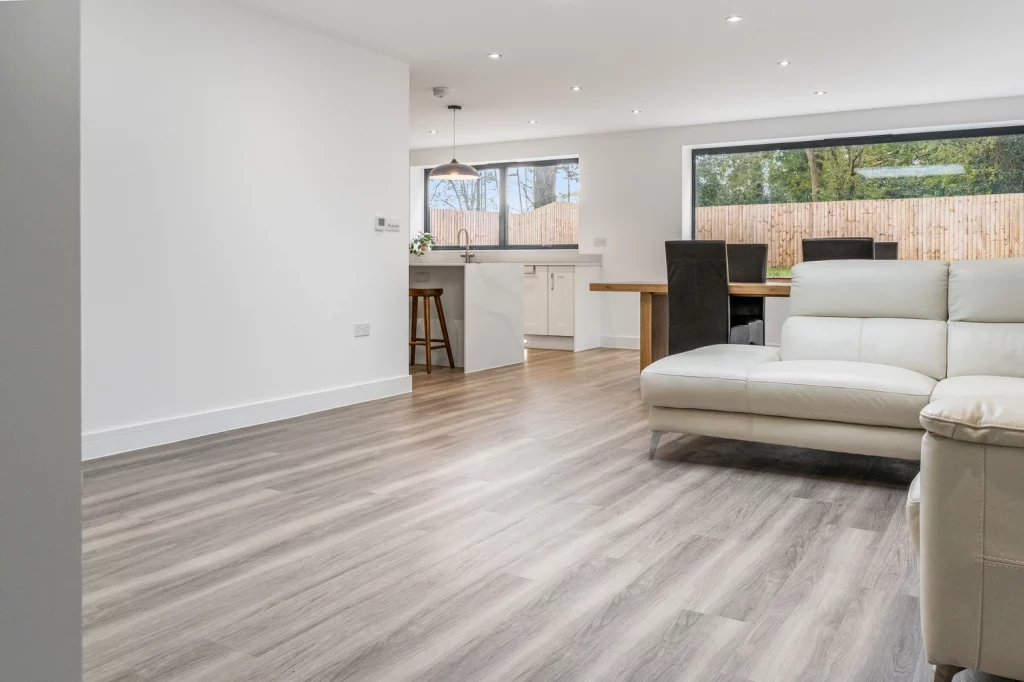
Step 5. Completing the work
Clearing the rubbish
Once the renovation work is done, it’s time to remove all the rubbish and debris left behind. A tidy site will make it easier to carry out inspections and ensure everything is done to satisfaction. You can hire professional rubbish removal services or clear it out yourself using the skip you’ve hired.
After clearing the rubbish, conduct a thorough cleaning of your newly renovated home. This step helps remove any dust or residue left behind, ensuring your new space is safe and comfortable to live in.
A professional cleaning service can be beneficial to achieve a spotless finish allowing you to gate back to daily life as soon as possible.
Step 6. Snagging your renovation project
Fine tune the details
Now that the bulk of your renovation work is done, it’s time to address any loose ends and small issues that have arisen during the project, dont worry if you have a lot as it happens on all projects! This process, known as snagging, ensures that all aspects of the renovation meet your expectations and are completed to a high standard.
Begin by thoroughly inspecting every room and area of your home, making a list of any concerns or defects you come across. This could include paint touch-ups, minor repairs, or adjustments to fixtures and fittings.
Once you have identified and documented any snags, discuss your findings with your contractor or project manager. They can then work with you to prioritise items on the snag list and establish a timetable for completing the remaining work. Remember to allow sufficient time for this stage of the project, as it can take several weeks to resolve all snags, depending on how many you find and the complexity of your renovation.
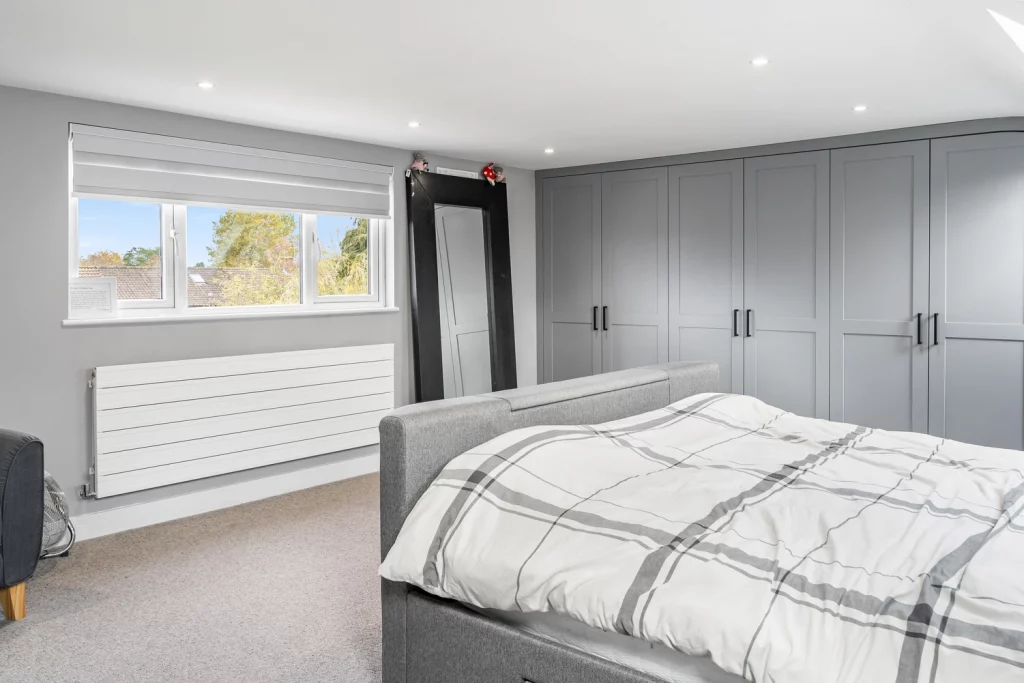
Conclusion
Renovating your home can be a worthwhile investment, both in terms of maintaining its value and improving its liveability. It is advisable to assess the need for renovations based on your lifestyle preferences, local property trends, and the age of the property. Remember that older homes may require more regular maintenance and repairs.
Lastly, consider the potential impact of the renovation on your property’s value and local market conditions. It is essential to plan and execute renovations that enhance your home’s appeal without overcapitalising. By taking these factors into account, you can make informed decisions regarding the frequency and scope of your St Albans home renovations.
Feel free to reach out to us for your next renovation project. We’d love to help!

Craig Smith
The founder of CJ Smiths Construction Company for over 14+ years and a proud citizen of St Albans City.
